Symbol Code: SM000188 Symbol Name: Spiral Celtic Symbol (Category: Ancestors )
|
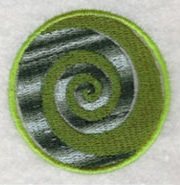 | The spiral is prevelant in a vast amount of Celtic ruins and remains. This symbol is often found in many other ancient cultures spanning the globe. This is a powerful sign as it represents spiritual awareness, and expansion of thought. Focus upon this spiral mandala augments the understanding that we are more than our bodies and more than the confines of this earth. Delving deeper into this symbol we find that we are ever growing and increasing, and as our awareness expands, so too does our energy. As such, we are reminded to pass our positive energy out to others and the world, ultimately making the universe a better place to live and grow.
Reference:http://www.whats-your-sign.com/Celtic-symbol-mandala.html |
|
Symbol Code: SM000189 Symbol Name: Trinity Celtic Knot (Category: Ancestors )
|
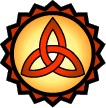 | The Celtic Trinity Knot, or the Triquetra, is one of the most common of the knot ilk. The term Triquetra comes from Latin, and it means "three-cornered." There are many schools of thought when discussing the Celtic trinity knot meaning.All of the various interpretations agree on a culmination of thee parts.For example, early Christian understanding views the symbols as the Father, Son and Holy Spirit.
Reference:http://www.whats-your-sign.com/celtic-knots.html |
|
Symbol Code: SM000190 Symbol Name: Dara Celtic Knot (Category: Ancestors )
|
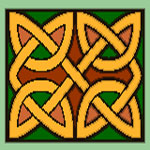 | The oak in all of its symbolic glory (including other Celtic symbols such as the Dara knot) is invoked in times when we must gather our internal fortitude for the purpose of remaining strong in times of challenge.The Dara knot, as it is associated with the oak, reminds us that beneath our surface (beneath the soil) we have vastly divine inner resources (root system) that lend us wisdom and stability regardless of the circumstances we see around us.
Reference:http://www.whats-your-sign.com/dara-celtic-knot-meaning.html |
|
Symbol Code: SM000225 Symbol Name: Akua’ba (Category: Ancestors )
|
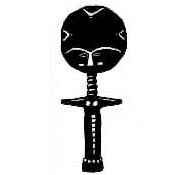 | An Akua’ba is a carved figure used by the African Ashanti tribe as a talisman to promote fertility and and to protect pregnant women.A woman who hopes to become pregnant will keep such a blessed doll on her person, and dresses and cares for it as one would a real child.
Reference:http://symboldictionary.net/?p=3077 |
|
Symbol Code: SM000226 Symbol Name: Oshe Shango (Category: Ancestors )
|
 | A variation of the oshe Shango, a symbolic double-bladed axe representing the divine weapon of the Yoruban Orisha Shango (Also spelled Chango, Xango).Shango was once a Yoruban king, now the Orisha of thunder, drums, and dance. He is one of the Seven African Powers, revered in Santeria, Candomble, and Palo. Shango is syncretised with the catholic Saint Barbara in the Lukumi religion (Santeria)
Reference:http://symboldictionary.net/?p=3066 |
|
Symbol Code: SM000227 Symbol Name: The Cat (Category: Ancestors )
|
 | Cats, known in Ancient Egypt as the mau, were sacred and very important in ancient Egyptian society. Beginning as a wild, untamed species, cats were useful for limiting vermin in Egyptian crops and harvests; through exposure, cats became domesticated and learned to coexist with humans. The people in what would later be Upper and Lower Egypt had a religion centering around the worship of animals, including cats.Praised for controlling vermin and its ability to kill snakes such as cobras, the domesticated cat became a symbol of grace and poise. The goddess Mafdet, the deification of justice and execution, was a lion-headed goddess. The cat goddess Bast (also known as Bastet) eventually replaced the cult of Mafdet, and Bast's image softened over time and she became the deity representing protection, fertility, and motherhood.
Reference:http://www.ancient-symbols.com/sacred_symbols.html |
|
Symbol Code: SM000228 Symbol Name: Ako Ben - the 'war horn'. (Category: Ancestors )
|
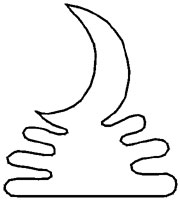 | Symbol represents a state of readiness, vigilance, and wariness.It refers, in essence, to an instantaneous response to a call-to-arms. The symbol is based on a traditional war chief's horn which was embellished with the jaw bones of defeated enemies It is said that such a horn sings the praises of the chief through the jaws of his enemies.
Reference:http://www.ancient-symbols.com/african_symbols.html |
|
Symbol Code: SM000229 Symbol Name: Sankofa Symbol (Category: Ancestors )
|
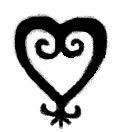 | Sankofa can mean either the word in the Akan language of Ghana that translates in English to "go back and take" (Sanko- go back, fa- take) or the Asante Adinkra symbol. It is often associated with the proverb, "Se wo were fi na wosankofa a yenkyi," which translates "It is not wrong to go back for that which you have forgotten."
Reference:http://www.ancient-symbols.com/african_symbols.html |
|
Symbol Code: SM000230 Symbol Name: Hon Sha Ze Sho Nen (Category: Ancestors )
|
 | Hon Sha Ze Sho Nen - Reiki Symbol - This is the reiki symbol that can transmit the Reiki energy across space and time. This means the energy may travel across a town, across a room, and even across several places or countries all over the world. It transcends distance and can be used to connect time either in the past or the future.
Reference:http://www.ancient-symbols.com/healing_symbols.html |
|
Symbol Code: SM000231 Symbol Name: (Category: Ancestors )
|
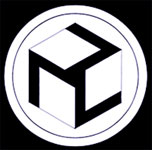 | These ancient healing symbols were used in Tibetan healing temples. They can strengthen your Reiki energy and provide specific kinds of healing for different types of problems. They are believed to enhance meditation and all forms of prayer or spiritual endeavors.
Reference:http://www.ancient-symbols.com/healing_symbols.html |
|
Symbol Code: SM000232 Symbol Name: Spiral Sun (Category: Ancestors )
|
 | Several Shamanic traditions consider the Sun to be the first shaman, that is, the first healer of people. The Spiral Sun comes from the Anasazi’s petroglyphs as a symbol of healing. The symbol stands for the natural movements and rhythms of life, the constant motion of the universe. It is representative of the unique healing power that is being radiated all around the cosmos, which helps us recover from setbacks and fall back into natural rhythm and healthy harmony of life.
Reference:http://www.ancient-symbols.com/healing_symbols.html |
|
Symbol Code: SM000233 Symbol Name: Heartline Arrow (Category: Ancestors )
|
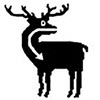 | The heartline is found on Zuni fetish drawings of animals; it represents the breath as the life force of the animal. Amulets containing heart line drawings are considered powerful talismans.
Reference:http://symboldictionary.net/?p=3430 |
|
Symbol Code: SM000234 Symbol Name: Rapanui Birdman (Category: Ancestors )
|
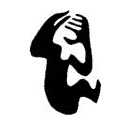 | This mysterious bird-headed figure, referred to casually as the “Birdman,” is one of many strange symbols found on inscribed wooden tablets written by the early people of Rapanui (Easter Island.) The tablets have never been translated, but are believed to have been religious in nature.
Reference:http://symboldictionary.net/?p=3435 |
|
Symbol Code: SM000235 Symbol Name: Hei Tiki (Category: Ancestors )
|
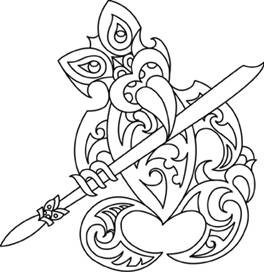 | The Hei Tiki or Tiki is an ancient symbol worn as a greenstone ornament around the neck by men and women. The popular understanding is that it is a symbol of fertility and growth. There is reference also with the Tiki to the myth of the first man created by Tāne. One theory of the origin of the hei-tiki suggests a connection with Tiki, the first man in Māori legend. According to Horatio Gordon Robley, there are two main ideas behind the symbolism of hei-tiki: they are either memorials to ancestors, or represent the goddess of childbirth, Hineteiwaiwa.
Reference:http://www.maori-arts.com/tikitat/gallery.htm |
|
Symbol Code: SM000433 Symbol Name: Valknut (Category: Ancestors )
|
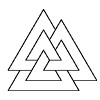 | The emblem at left found on old Norse stone carvings and funerary stelés, is sometimes called “Hrungnir’s heart,” after the legendary giant of the Eddas. It is best known as the Valknut, or “knot of the slain,” and it has been found on stone carvings as a funerary motif, where it probably signified the afterlife. The emblem is often found in art depicting the God Odin, where it may represent the gods power over death. The valknut can be drawn unicursally (in one stroke), making it a popular talisman of protection against spirits.
Reference:http://symboldictionary.net/?s=ancestors |
|
Symbol Code: SM000434 Symbol Name: Celtic Tree of Life (Crann Bethadh) (Category: Ancestors )
|
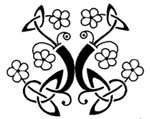 | The image shown here is one of many representations of the Celtic Tree of Life.The Tree was a central part of early Celtic spirituality. To the Celts, the tree was a source of basic sustenance- a bearer of food, a provider of shelter and fuel for cooking and warmth. Without trees, life would have been extraordinarily difficult.
Reference:http://symboldictionary.net/?s=ancestors |
|
Symbol Code: SM000435 Symbol Name: Minotaur (Category: Ancestors )
|
 | The Minotaur was the legendary monster of Cretan mythology, a hybrid man-bull creature, the offspring of Pasiphae, the wife of the King of Minos, and a bull.The minotaur lived at the center of a great labyrinth. According to legend, Minos demanded tribute from the Athenians in the form of seven pairs of male and female virgins, who were sacrificed to the Minotaur. This practice was ended by the hero Theseus, who, aided by the daughter of Minos, was able to slay the monster.
Reference:http://symboldictionary.net/?p=3285 |
|